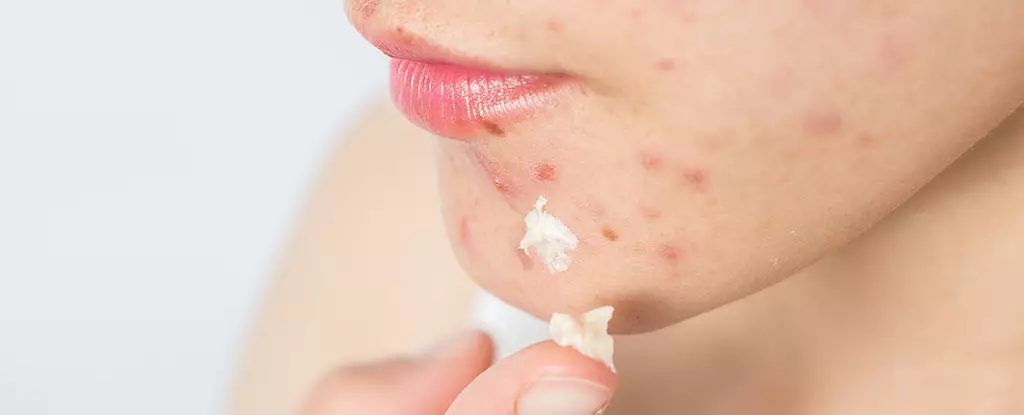The search for an effective treatment for acne vulgaris, a common inflammatory skin condition affecting millions of people worldwide, has been a constant battle against resistance and side effects. The overgrowth of Cutibacterium acnes, a skin bacterium, leads to uncomfortable eruptions of small pustules. While current treatment options such as antibiotics and hormonal regulation of skin oils offer some relief, they often come with undesirable consequences and are becoming less effective as bacteria develop resistance. However, a new study by researchers from the University of South Australia, the University of Adelaide, and Aix-Marseille Université in France presents a groundbreaking approach that could revolutionize acne treatment.
The researchers discovered that narasin, a commonly used antibiotic in livestock and poultry, has shown promise as a treatment for C. acnes, as the bacteria has yet to develop resistance against it. In laboratory conditions, narasin exhibited effectiveness against the target pathogen. However, delivering the antibiotic to the intended site of action within the skin posed a significant challenge, which prompted the exploration of a novel nanoparticle delivery system.
In their study, the researchers demonstrated that by encapsulating narasin within nano-micelles, which are microscopic envelopes about a thousand times smaller than a human hair strand, the antibiotic could penetrate much deeper into the skin compared to its simple water form. This innovative nanoparticle delivery system was found to improve solubility over 100 times, thanks to the incorporation of a compound called Soluplus. Soluplus not only enhanced the solubility of the nano-micelles but also improved the stability of the drug delivery process.
According to pharmaceutical scientist Sanjay Garg from the University of South Australia, the micelle formulation effectively delivered narasin to acne target sites that had previously been inaccessible. While the experiments were conducted using pig ear skin, the researchers believe that this delivery system has the potential to reach the hair follicles, where C. acnes thrives, in human subjects. This exciting possibility opens up new horizons in acne treatment.
The next crucial step is to test the effectiveness of this novel delivery system on actual individuals. If successful, a narasin nanoparticle gel could effectively eradicate C. acnes within the hair follicles, causing significant damage to the bacteria and reducing acne symptoms. Additionally, the stability of the gel at room temperature for four weeks provides hope for its feasibility as a practical treatment option.
Researchers emphasize the importance of expanding our knowledge of acne’s underlying causes to develop more effective treatments, especially as antibiotic resistance continues to emerge. Acne has a profound impact on approximately 9.4 percent of the global population, primarily adolescents, leading to various psychological and emotional challenges such as distress, embarrassment, anxiety, low self-confidence, and social isolation. By uncovering innovative solutions like nanoparticle delivery, pharmaceutical scientists like Fatima Abid from the University of South Australia offer hope for a future where acne treatments are more efficient, accessible, and tailored to individual needs.
The introduction of an antibacterial compound, narasin, delivered within nano-micelles represents a significant breakthrough in acne treatment. This novel delivery system enables the antibiotic to reach previously inaccessible target sites and demonstrates improved solubility compared to traditional methods. The stability of the narasin nanoparticle gel further enhances its potential as a practical treatment option. As researchers continue to investigate the causes of acne and explore new avenues for treatment, the development of innovative delivery systems offers hope for a brighter future for individuals suffering from this common skin condition. By addressing the underlying factors contributing to acne and embracing technological advancements, more tailored and efficient treatments can alleviate the physical and psychological burden experienced by millions of people worldwide.


Leave a Reply